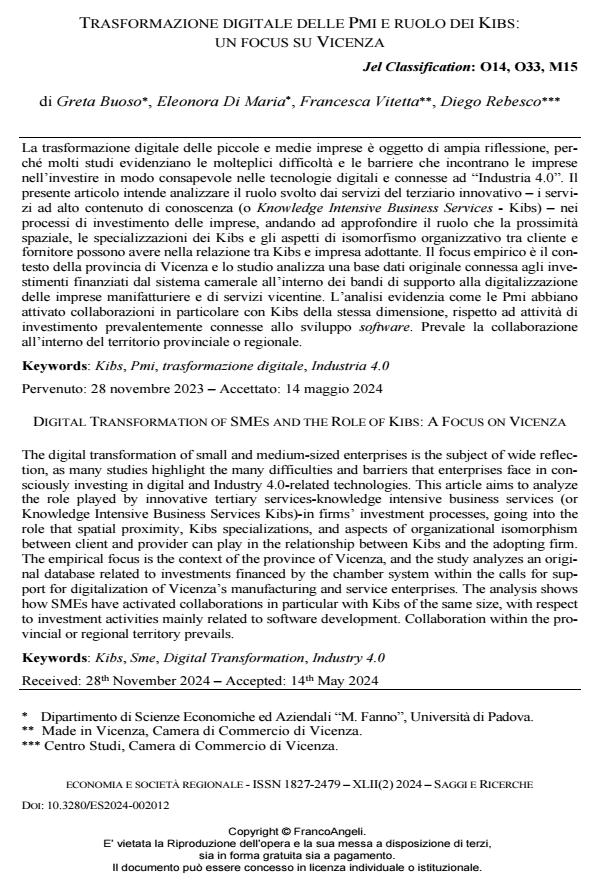Digital transformation of SMES and the role of kibs: a focus on Vicenza
Journal title ECONOMIA E SOCIETÀ REGIONALE
Author/s Greta Buoso, Eleonora Di Maria, Francesca Vitetta, Diego Rebesco
Publishing Year 2024 Issue 2024/2
Language Italian Pages 19 P. 163-181 File size 882 KB
DOI 10.3280/ES2024-002012
DOI is like a bar code for intellectual property: to have more infomation
click here
Below, you can see the article first page
If you want to buy this article in PDF format, you can do it, following the instructions to buy download credits

FrancoAngeli is member of Publishers International Linking Association, Inc (PILA), a not-for-profit association which run the CrossRef service enabling links to and from online scholarly content.
The digital transformation of small and medium-sized enterprises is the subject of wide reflection, as many studies highlight the many difficulties and barriers that enterprises face in consciously investing in digital and Industry 4.0-related technologies. This article aims to analyze the role played by innovative tertiary services-knowledge intensive business services (or Knowledge Intensive Business Services Kibs)-in firms’ investment processes, going into the role that spatial proximity, Kibs specializations, and aspects of organizational isomorphism between client and provider can play in the relationship be-tween Kibs and the adopting firm. The empirical focus is the context of the province of Vicenza, and the study analyzes an original database related to investments financed by the chamber system within the calls for support for digitalization of Vicenza’s manufac-turing and service enterprises. The analysis shows how SMEs have activated collabora-tions in particular with Kibs of the same size, with respect to investment activities main-ly related to software development. Collaboration within the provincial or regional terri-tory prevails.
Keywords: Kibs, Sme, Digital Transformation, Industry 4.
Jel codes: O14, O33, M15
Greta Buoso, Eleonora Di Maria, Francesca Vitetta, Diego Rebesco, Trasformazione digitale dellePMI e ruolo dei kibs: un focus su Vicenza in "ECONOMIA E SOCIETÀ REGIONALE " 2/2024, pp 163-181, DOI: 10.3280/ES2024-002012